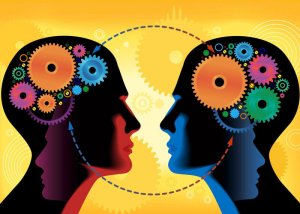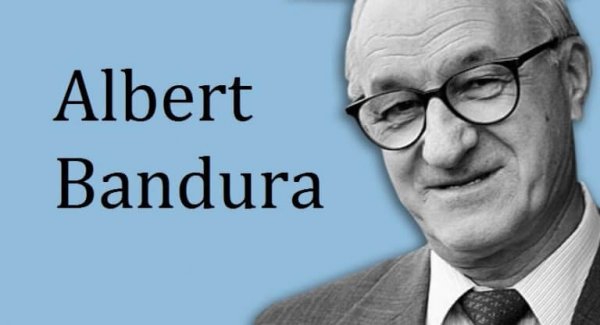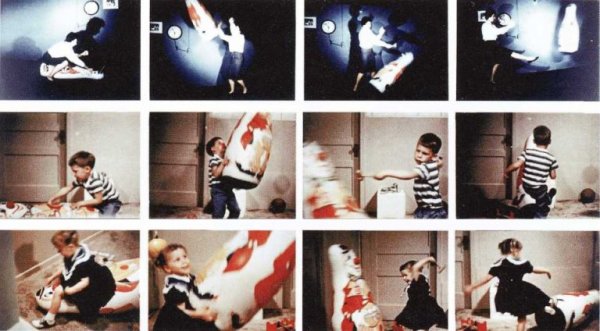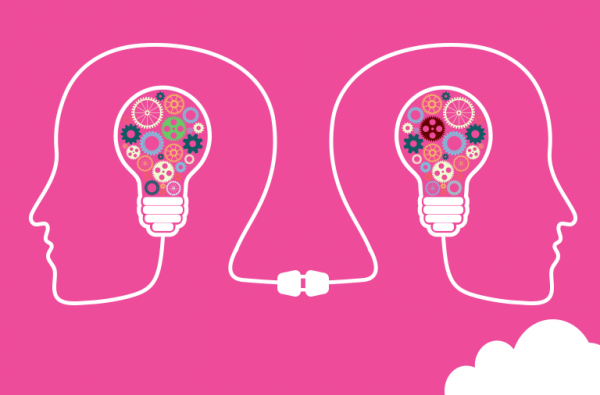Social Learning: Albert Bandura's Interesting Theory


Written and verified by the psychologist Valeria Sabater
How do we learn about people? Understanding what mechanisms, gears and complex subtleties that set a behavior or skill in motion has always been one of the goals of psychology. Albert Bandura introduced the theory of social learning, a theory on the interaction between the mind of the learner and their environment.
Most of us don’t have a clue how children learn things. Some people still see the teaching or the acquisition of a certain skill as the result of the classic behavioral approach, something based on imitation, conditioning and positive or negative reinforcement.
“Learning is bidirectional: we learn from the environment, and the environment learns and is modified thanks to our actions.”-Albert Bandura-
However, nothing is so intricate, complex and fascinating as the mind of an apprentice, the brain of a child or the ability of an adult to generate a behavior or acquire specific knowledge. None of us is a empty box to fill based on external pressures and constraints. People observe, imitate, develop in a particular social environment and in turn have certain mental states that encourage or hinder learning.
Albert Bandura, a Canadian psychologist and professor at Stanford University, addressed these questions to formulate what we now know as Social Learning Theory. It’s an approach where the behavioral and the cognitive meet.

What does Social Learning Theory tell us?
Bandura’s social learning theory is also known as observation learning or modeling. To add a little context, it started in the 60’s, a time when behaviorism held much weight and learning was thought of as a simple giving and receiving of information from expert to apprentice. One sent and the other received. In other words, the expert was the active hub and the apprentice the passive hub.
Albert Bandura, on the other hand, looked beyond that behavioral reductionism to the field of the social. Lev Vygotsky with his Sociocultural theory, was another. Bandura said that children learn certain lessons quickly without trial and error. If so, there was one big reason: observation and social environment.
The Bobo Doll
The Bobo doll experiment is one of the best known in the field of psychology. Throughout 1961 and 1963, Bandura and his team sought to demonstrate the importance of observational learning in children and how the imitation of a model — an adult — is much more significant to children than simply giving or removing a reinforcement.

- The experiment involved children from 3 to 6 years old from Stanford University’s nursery. The scene was shocking. In a room full of toys, an adult beat a large doll with a mallet in front of a group of children. In another experimental group, the adult represented a non-aggressive model. Then, for a third group the aggressiveness was accompanied by insults towards the doll.
- The results could not be clearer. Most of the children exposed to the aggressive model were more likely to act physically aggressively than those who were not exposed to the model.
Bandura demonstrated that there are 3 basic forms of observational learning:
- Through a live model, like a real person who performs a behavior.
- Through a verbal instruction: telling details and descriptions of a behavior.
- Symbolic method: fictional characters of a book or movie. A real person whose behavior is transmitted through the media counts here too.
Processes that mediate Social Learning
The Theory of Social Learning is often described as a “bridge” between traditional learning theory (e.g., behaviorism) and the cognitive approach. Bandura, unlike Skinner, always saw mental (cognitive) factors in learning as important. In fact, he defined “learners” as actively processing information and assessing the relationship between behavior and consequences.
Therefore, we should not fall into the error of thinking that people imitate everything they see, and that absolutely all children are going to carry out aggressive behavior just from seeing violent scenes at home or on television. There are thoughts before imitation. Additionally, there are mediators that will encourage the imitation or an alternative response.
Here are some of those mediators:
The environment
Our society is not entirely homogeneous. Rather, it consists of and also produces the most varied environments and scenarios. Some are more favorable, and others are more oppressive.
Let’s look at an example. Carlos is 11 years old and this year he has a new violin teacher. At the beginning he was fascinated by the instrument. He wanted to have one, to learn more. However, his father unconstructively and quickly got the idea out of his head. “That’s nonsense!” he yelled. Since then, Carlos stopped having an interest in the violin.

Attention
For a behavior to be imitated it has to capture our attention, interest, and mirror neurons. Every day we all observe many behaviors. However, they are not all worthy of our interest.
Motivation
Motivation is the motor, the will to perform a certain behavior that we see in others.
- Now, at this point we have to talk about vicarious learning. According to Bandura, just “observing” what others do isn’t enough. We also have to see what rewards or consequences others obtain for that behavior.
- If the perceived rewards outweigh the perceived costs (if any) then the observer will imitate it. On the other hand, if the vicarious reinforcement is not seen as important enough for the observer, then they will not imitate that behavior.

To conclude, the Social Learning Theory was one of the most interesting qualitative leaps in the field of psychology. In fact, we could still say that Albert Bandura, at 91, is one of the most valued and decorated personalities of the field.
Thanks to him we better understand how we acquire knowledge and generate certain behaviors. We see how the external — the social — is related to our internal processes — the cognitive — and how we also serve as a model for other people in our environment, many times without realizing it.
Bibliographic references
Bandura, Albert, (1987) “Social Learning Theory“, Espasa Libros
Bandura, Albert and Walters, Ruchards, (2004) “Social Learning and Personality Development“, Paidós.
How do we learn about people? Understanding what mechanisms, gears and complex subtleties that set a behavior or skill in motion has always been one of the goals of psychology. Albert Bandura introduced the theory of social learning, a theory on the interaction between the mind of the learner and their environment.
Most of us don’t have a clue how children learn things. Some people still see the teaching or the acquisition of a certain skill as the result of the classic behavioral approach, something based on imitation, conditioning and positive or negative reinforcement.
“Learning is bidirectional: we learn from the environment, and the environment learns and is modified thanks to our actions.”-Albert Bandura-
However, nothing is so intricate, complex and fascinating as the mind of an apprentice, the brain of a child or the ability of an adult to generate a behavior or acquire specific knowledge. None of us is a empty box to fill based on external pressures and constraints. People observe, imitate, develop in a particular social environment and in turn have certain mental states that encourage or hinder learning.
Albert Bandura, a Canadian psychologist and professor at Stanford University, addressed these questions to formulate what we now know as Social Learning Theory. It’s an approach where the behavioral and the cognitive meet.

What does Social Learning Theory tell us?
Bandura’s social learning theory is also known as observation learning or modeling. To add a little context, it started in the 60’s, a time when behaviorism held much weight and learning was thought of as a simple giving and receiving of information from expert to apprentice. One sent and the other received. In other words, the expert was the active hub and the apprentice the passive hub.
Albert Bandura, on the other hand, looked beyond that behavioral reductionism to the field of the social. Lev Vygotsky with his Sociocultural theory, was another. Bandura said that children learn certain lessons quickly without trial and error. If so, there was one big reason: observation and social environment.
The Bobo Doll
The Bobo doll experiment is one of the best known in the field of psychology. Throughout 1961 and 1963, Bandura and his team sought to demonstrate the importance of observational learning in children and how the imitation of a model — an adult — is much more significant to children than simply giving or removing a reinforcement.

- The experiment involved children from 3 to 6 years old from Stanford University’s nursery. The scene was shocking. In a room full of toys, an adult beat a large doll with a mallet in front of a group of children. In another experimental group, the adult represented a non-aggressive model. Then, for a third group the aggressiveness was accompanied by insults towards the doll.
- The results could not be clearer. Most of the children exposed to the aggressive model were more likely to act physically aggressively than those who were not exposed to the model.
Bandura demonstrated that there are 3 basic forms of observational learning:
- Through a live model, like a real person who performs a behavior.
- Through a verbal instruction: telling details and descriptions of a behavior.
- Symbolic method: fictional characters of a book or movie. A real person whose behavior is transmitted through the media counts here too.
Processes that mediate Social Learning
The Theory of Social Learning is often described as a “bridge” between traditional learning theory (e.g., behaviorism) and the cognitive approach. Bandura, unlike Skinner, always saw mental (cognitive) factors in learning as important. In fact, he defined “learners” as actively processing information and assessing the relationship between behavior and consequences.
Therefore, we should not fall into the error of thinking that people imitate everything they see, and that absolutely all children are going to carry out aggressive behavior just from seeing violent scenes at home or on television. There are thoughts before imitation. Additionally, there are mediators that will encourage the imitation or an alternative response.
Here are some of those mediators:
The environment
Our society is not entirely homogeneous. Rather, it consists of and also produces the most varied environments and scenarios. Some are more favorable, and others are more oppressive.
Let’s look at an example. Carlos is 11 years old and this year he has a new violin teacher. At the beginning he was fascinated by the instrument. He wanted to have one, to learn more. However, his father unconstructively and quickly got the idea out of his head. “That’s nonsense!” he yelled. Since then, Carlos stopped having an interest in the violin.

Attention
For a behavior to be imitated it has to capture our attention, interest, and mirror neurons. Every day we all observe many behaviors. However, they are not all worthy of our interest.
Motivation
Motivation is the motor, the will to perform a certain behavior that we see in others.
- Now, at this point we have to talk about vicarious learning. According to Bandura, just “observing” what others do isn’t enough. We also have to see what rewards or consequences others obtain for that behavior.
- If the perceived rewards outweigh the perceived costs (if any) then the observer will imitate it. On the other hand, if the vicarious reinforcement is not seen as important enough for the observer, then they will not imitate that behavior.

To conclude, the Social Learning Theory was one of the most interesting qualitative leaps in the field of psychology. In fact, we could still say that Albert Bandura, at 91, is one of the most valued and decorated personalities of the field.
Thanks to him we better understand how we acquire knowledge and generate certain behaviors. We see how the external — the social — is related to our internal processes — the cognitive — and how we also serve as a model for other people in our environment, many times without realizing it.
Bibliographic references
Bandura, Albert, (1987) “Social Learning Theory“, Espasa Libros
Bandura, Albert and Walters, Ruchards, (2004) “Social Learning and Personality Development“, Paidós.
All cited sources were thoroughly reviewed by our team to ensure their quality, reliability, currency, and validity. The bibliography of this article was considered reliable and of academic or scientific accuracy.
- Bandura, A. (1978). Autoeficacia: hacia una teoría unificadora del cambio de comportamiento. Avances en la investigación y terapia del comportamiento , 1 (4), 139–161. https://doi.org/10.1016/0146-6402(78)90002-4
- Bandura, Albert, (1987) “Teoría del Aprendizaje Social”, Espasa Libros
- Bandura, Albert y Walters, Ruchards, (2004) “Aprendizaje Social y desarrollo de la personalidad”, Paidós.
- Bandura, A. (2012). Teoría cognitiva social. En el Manual de teorías de la psicología social: Volumen 1 (pp. 349–374). SAGE Publications Inc. https://doi.org/10.4135/9781446249215.n18
This text is provided for informational purposes only and does not replace consultation with a professional. If in doubt, consult your specialist.







